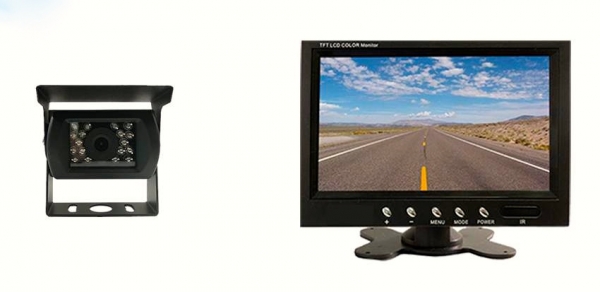Welcome to Crossing Creeks RV Resort & Spa in the heart of iconic Blairsville
Older RVs and tow vehicles may lack some of the newest electronic accessories, including one of the more useful innovations, the backup camera. With wireless technology, it’s actually quite easy to add one.
The rear of a travel trailer is a great spot for a backup camera, but it’s a place not likely to have one. A backup camera will make backing into a campsite and just turning around much easier. It also will make highway driving easier because it can serve as a rearview mirror, displaying what’s behind your trailer.
A wireless setup is ideal for the rear of a trailer—the camera and sending unit behind the trailer, and the viewer inside the tow vehicle. You also can get wireless systems that add cameras to the blind spots of trailers or motorhomes. Wireless range may be as high as 70 feet.
Wired cameras for trailers with up to 50 feet of wire are available, but you must decide if you want to do an installation on that scale. Remember, you would have to wire the length of the trailer and the length of the tow vehicle, plus connect at the hitch.
A wired camera is better used on a motorhome or for mounting a camera to work only for a tow vehicle. Wired units generally are cheaper but take more time to install. A camera on the tow vehicle itself will help when driving the truck alone, and maybe during trailer hitching, but it won’t help you see behind the trailer.
Costs Range Widely
You can get a camera for less than $20, but you’ll probably have to supply a monitor, and the image quality will be low, especially in extreme lighting conditions. Kits with both camera and monitor range from about $60 to the mid-$200 area for wired types, and from about $100 to $400 for wireless, with the monitor size and features affecting the price. Wireless systems with extra cameras for blind spots, useful on large motorhomes and trailers, are available for about $500 but can top $900.
Available Features
Mounting Method - Cameras can be mounted by drilling through your vehicle’s or trailer’s body, by using pressure-sensitive tape, or by mounting atop or in place of the license plate frame.
Display Type - You can buy separate camera and monitor, camera-and-monitor kits, or cameras that beam their signal to your iOS or Android smartphone. Displays typically increase with screen size, 4.3-, 5- or 7-inch. Some displays replace your rearview mirror, with widths between 7 and 10 inches. They work like traditional mirrors when not powered up.
Sensor Type - CMOS sensors provide a lower-quality image, but they’re cheaper. CCD sensors provide good images even in low or bright light, but they cost more.
Reverse Image - The view looks like what you see in your rearview mirror—highly desirable.
Auxiliary Lights - Some cameras get help at night from small lights. Infrareds are best.
Lane Departure Warning - Another feature not available on earlier model vehicles, lane departure alerts you if you stray into another lane.
Recording and Playback - Look for this if you want a record of your driving.
Backup Grid - Lines guide you in backing up straight. Original equipment cameras typically have this feature.
Instant Power - As on new vehicles, the camera goes on as soon as you shift into reverse.
DIY or Installed?
Experienced do-it-yourselfers can probably handle installation, but bigger wired systems may be better left in the hands of a shop. You may balk if your camera requires drilling; make sure it properly seals out water to prevent rust, and use a quality drill bit from a name brand, such as Black & Decker, Dewalt or Milwaukee. You may have to splice into your vehicle’s wiring with some systems, and definitely for automatic power-on, so make sure you’re comfortable with that. Expect to pay a shop’s normal hourly rates for installation.
Leave a comment
Make sure you enter all the required information, indicated by an asterisk (*). HTML code is not allowed.
